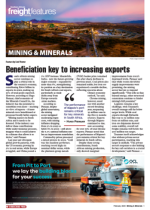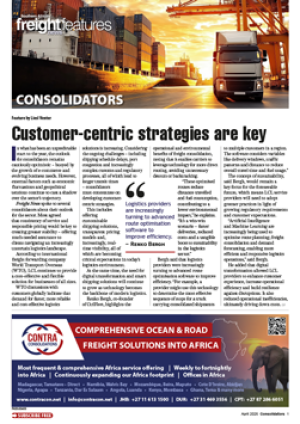Brazil’s successful infrastructure model can provide a useful blueprintfor Africa in addressing its own infrastructure challenges. Francisco Ferreira, partner at Aroeira Salles, attributes Brazil’s success to a stable legal framework and its long-term investment certainty, which have been instrumental in developing the country’s infrastructure.“In the 90s, Brazil underwent a significant reform of its administrative system,” said Ferreira. “Federal agencies were established, each tasked with managing a specific sector of the economy. These agencies were designed to remain protected from political changes, with directors given clear mandates and timeframes. Public participation and impact assessments for new regulations became a central part of the process, ensuring transparency and accountability.”Ferreira pointed out that while certain sectors – such as mining – still required further structuring, others, like roads, ports and railways, were well-regulated. He cited the 400km highway between Rio de Janeiro and São Paulo, which has gone through multiple concessions, as an example of Brazil’s continuous improvement and learning curve in its infrastructure development.“Legal and regulatory systems are complex, but we have mechanisms in place, such as arbitrators, who help manage disputes and ensure the safety of contracts,” Ferreira adds. “This stable regulatory environment and the willingness to enter long-term concessions have allowed Brazil to make significant advances, with risk-sharing measures that encourage investor confidence.”Darius Jonker, head of government & international relations, Americas, at Anglo America, said Africa could benefit from adopting a similar approach.“By establishing stable, transparent regulatory frameworks and encouraging long-term investments, it could help overcome many of the continent’s infrastructure challenges and unlock its potential for economic growth.”Aboubacar Koulibaly, head of country at Rio Tinto Guinea, said the Simandou project, the largest mining and infrastructure venture in Africa, was a prime example of the transformative changes unfolding across the continent. “Simandou, with its high-grade iron ore located in the eastern part of Guinea, 670km from the coast, represents a major challenge,” he explained. “It requires not only the development of the mine itself but also the infrastructure to exploit it. The railway, which is essential to the success of the project, is a massive undertaking that demands significant financial resources. Guinea is working closely with institutional partners to ensure its development.”He also drew comparisons to Brazil’s experience, emphasising that there were valuable lessons to be learned, particularly in terms of complex partnerships. “The partnership involved in this project is incredibly intricate, as it spans a wide and complex ecosystem,” he said, indicating that in Africa it was never about just developing infrastructure for a mine, but rather about developing corridors to drive broader economic transformation and allow the entire continent to thrive. LV

